DJI Mini 3 Pro vs DJI Mini 2: which is the best small drone for you?
Which of DJI's compact drones should you buy?
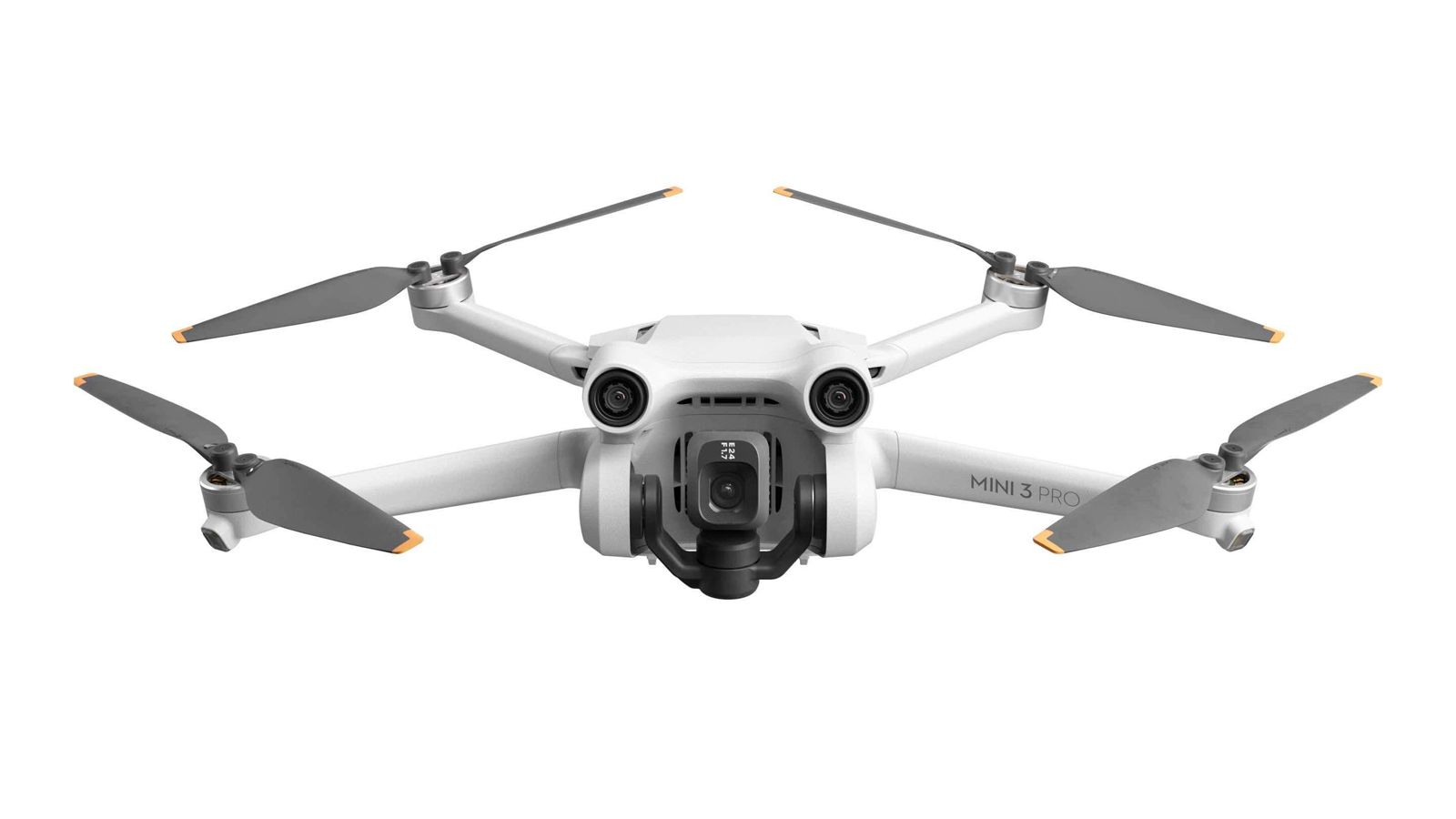
Sensor: 12.1MP 1/1.3in
Video: 4K/60p, 2.7K/60p, 1080/120p
Transmission: OcuSync 3.0
Flight time: 34 mins
The Mini 3 Pro is the best compact drone you can buy, but those Mini 2-beating skills come at a price. Its larger sensor, obstacle-avoidance sensors and ability to easily shoot vertical video give it the edge over its older rival. But the Mini 2 offers better value, particularly if you can find discounts in the sales.
Pros
- Useful obstacle avoidance
- Larger sensor of the two
- OcuSync 3.0 connectivity
Cons
- Considerably pricier
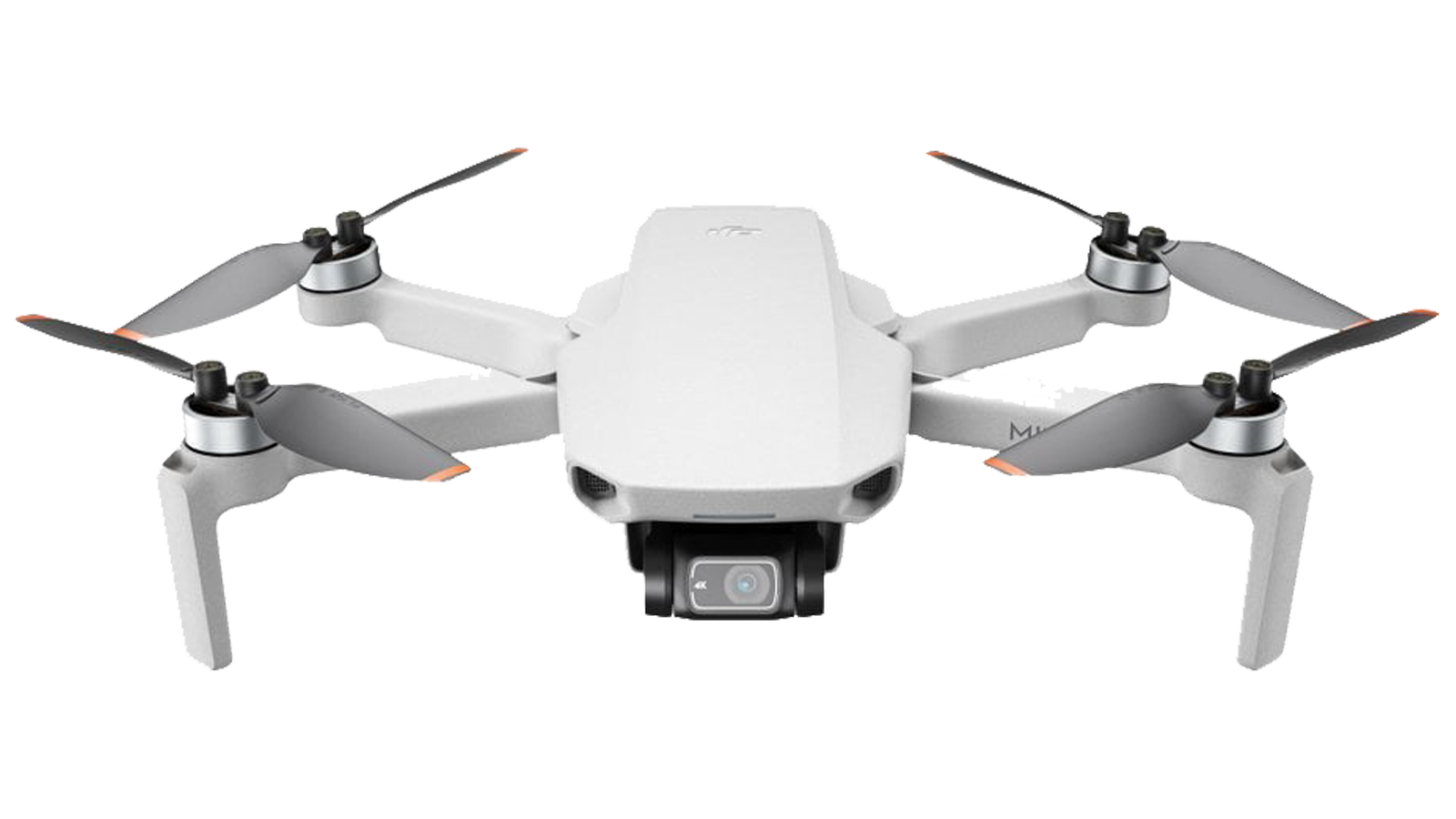
Sensor: 12.1MP 1/2.3-inch
Video: 4K/30p, 1080/60p
Transmission: OcuSync 2.0
Flight time: 31 mins
The older DJI Mini 2 remains our pick for drone beginners, due to its more affordable price tag and helpful automated flight modes. Despite its smaller sensor, it shoots high-quality 4K video in good light and has a comparable 31-minute flight time. The lack of obstacle avoidance sensors makes it more vulnerable to crashes, though.
Pros
- Cheaper of the two
- Similar automated modes
- Same compact size
Cons
- Smaller sensor of the two
- No 'follow me' mode
- OcuSync 2.0 connectivity
The DJI Mini 3 Pro is the follow-up to 2020’s DJI Mini 2. It’s an easy-to-use drone, because its sub-250g design means you don’t have to register it in most countries, and that light weight brings other benefits, too.
A few months ago we had a team brainstorm about what we hoped to see in the DJI Mini 3 Pro, while sticking to what was vaguely feasible. DJI hasn’t disappointed, adding and improving features and functionality in virtually every area we thought deserved attention.
The DJI Mini 3 Pro has a full object-detection system. Its camera has a larger sensor than the Mini Pro 2’s, and can shoot video at 4K resolution and 60 frames per second, and there’s a Full HD 120fps slow-mo mode.
Fast charging has improved dramatically, there’s a new DJI RC controller and – the upgrade we were least confident about seeing – there’s even an option to significantly boost run time with a new ‘Plus’ series battery (for those who live outside the EU, at least).
The Mini 3 Pro is clearly a much more capable drone, but you do have to pay for these upgrades. So which should you buy? Let's dig into the details.
DJI Mini 3 Pro vs DJI Mini 2: price
The DJI Mini 3 Pro costs significantly more than its predecessor, starting at $669 / £649 / AU$989 if you don’t need a remote control, or $759 / £709 / AU$1,119 for those who do not own a remote already. This is a good $300 higher than the current pricing of the DJI Mini 2, which is available around $450 / £420 / AU$750.
However, the disparity largely makes sense when you consider the new features of the DJI Mini 3 Pro. It’s much more than simply an update that brings the core components up to 2022 standards.
Sign up for breaking news, reviews, opinion, top tech deals, and more.
The new obstacle detection system alone means it arguably deserves its ‘Pro’ title, which isn’t always the case for tech products, with ‘Pro’ and ‘Plus’ monikers often seemingly handed out like candy.
| Row 0 - Cell 0 | DJI Mini 3 Pro | DJI Mini 2 |
| With standard controller | $759 / £709 / AU$1,119 | $450 / £420 / AU$750 |
| With Fly More Combo | $948 / £868 / AU$1,378 | $599 / £549 / AU$949 |
You have a whole stack of options to consider when buying, too. The base $669 / £649 / AU$989 package gets you the Mini 3 Pro with no remote control. It costs $759 / £709 / AU$1,119 with the standard remote control, and $909 / £859 / AU$1,299 with the new higher-end DJI RC remote with a built-in display.
Each of these packages is also available with the popular Fly More Kit for an additional $189 / £159 / AU$259. This includes two additional batteries, a carry case, charge dock and spare rotor blades. In the US and Australia there’s also a Plus Fly More pack with higher-capacity batteries for $259 / AU$359.
DJI Mini 3 Pro vs DJI Mini 2: design and controller
- Mini 3 Pro is slightly larger than Mini 2
- Both are sub-250g designs
- DJI RC brings makes integrated display remotes more accessible
The DJI Mini 3 Pro looks quite different to the DJI Mini 2, more so than we imagined it might; although we’re speaking as people who spend a little too much time looking at photos of drones.
It’s still a largely familiar mini drone design, just one with a few new visible features plus some tweaks that DJI has made to lower its weight. For example, the DJI Mini 2 has stabilizer legs at the end of each rotor arm to ensure that the drone can sit on the ground without falling over.
These have been pulled in to sit under the abdomen of the DJI Mini 3 Pro. Less plastic, less weight? Sure, but DJI has also made the DJI Mini 3 Pro significantly larger than its predecessor, with or without the propellers attached. The full ready-to-fly dimensions of the new drone are 251 x 362 x 70mm, up from 245 x 289 x 56 in the DJI Mini 2.
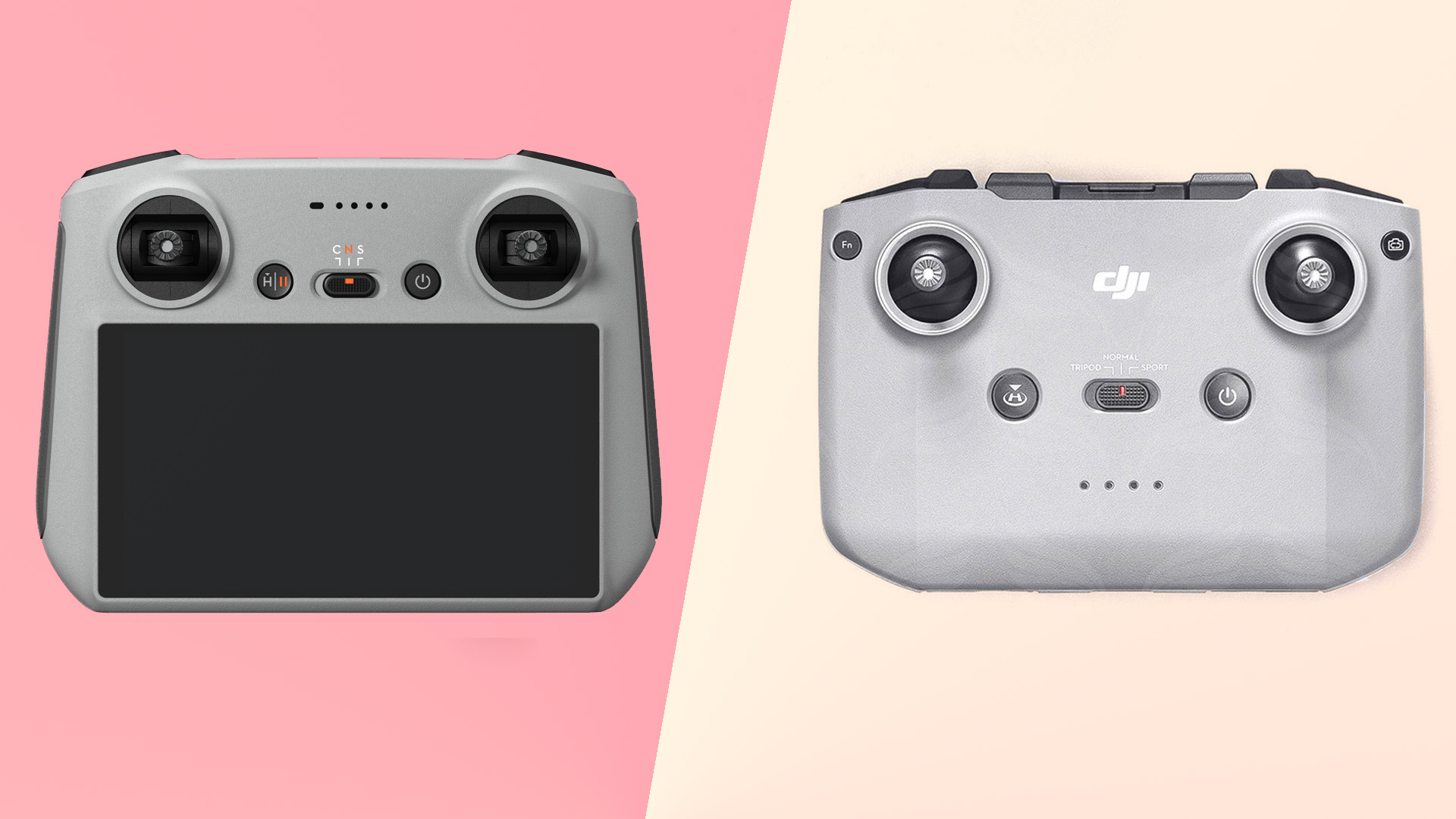
Just as important, the folded-away dimensions are 145 x 90 x 62mm for the DJI Mini 3 Pro and 138 x 81 x 58 mm for the DJI Mini 2. It’s good to see the sizes of the drones get closer when packed away for storage and transport.
The most obvious visual difference between the two is the new obstacle detection cameras on the front of the DJI Mini 3 Pro. Where the DJI Mini 2’s snout looks a bit like that of a whale shark, the new design is more insect-like.
DJI has also released a fresh remote control for the DJI Mini 3 Pro – the DJI RC – and it’s one that fits its higher-end stature. Where the DJI Mini 2 includes a remote that’s designed to connect to your phone’s display, you can now either get one in this familiar style or the DJI RC. The new controller has a 5.5-inch screen with 700-nit brightness, comparable with the brightness of a decent phone, and yet weighs just 390g, similar to the standard remote.
It’s effectively a much more accessible take on the DCI RC Pro – that remote arrived with the DJI Mavic 3 and is even brighter at up to 1000 nits, but costs a small fortune.
DJI Mini 3 Pro vs DJI Mini 2: specs and features
- The DJI Mini 3 Pro has a proper obstacle detection system
- This allows for much better automated flight modes
- Flight time increased slightly, or dramatically with the new Plus battery
New obstacle detection sensors make the DJI Mini 3 Pro quite a different drone to the DJI Mini 2 in an area first-time drone buyers may not consider: intelligence. The DJI Mini 2 only has downward-facing sensors, which let it see obstacles below.
The DJI Mini 3 Pro has an impressive array of sensors, particularly for an ultra-light drone. Downward-facing sensors remain, but the forwards- and backwards-facing sensors are new, letting the drone automate its movements with a much greater awareness of the world around it.
DJI’s forward-facing sensors have 106 degrees of horizontal vision, and 90 degrees vertical. The disparity here is because the camera sensors sit in a line, extending the width of their view but not the height. Rear obstacle sensors have a narrower effective window of 58 degrees horizontal and 73 degrees vertical.
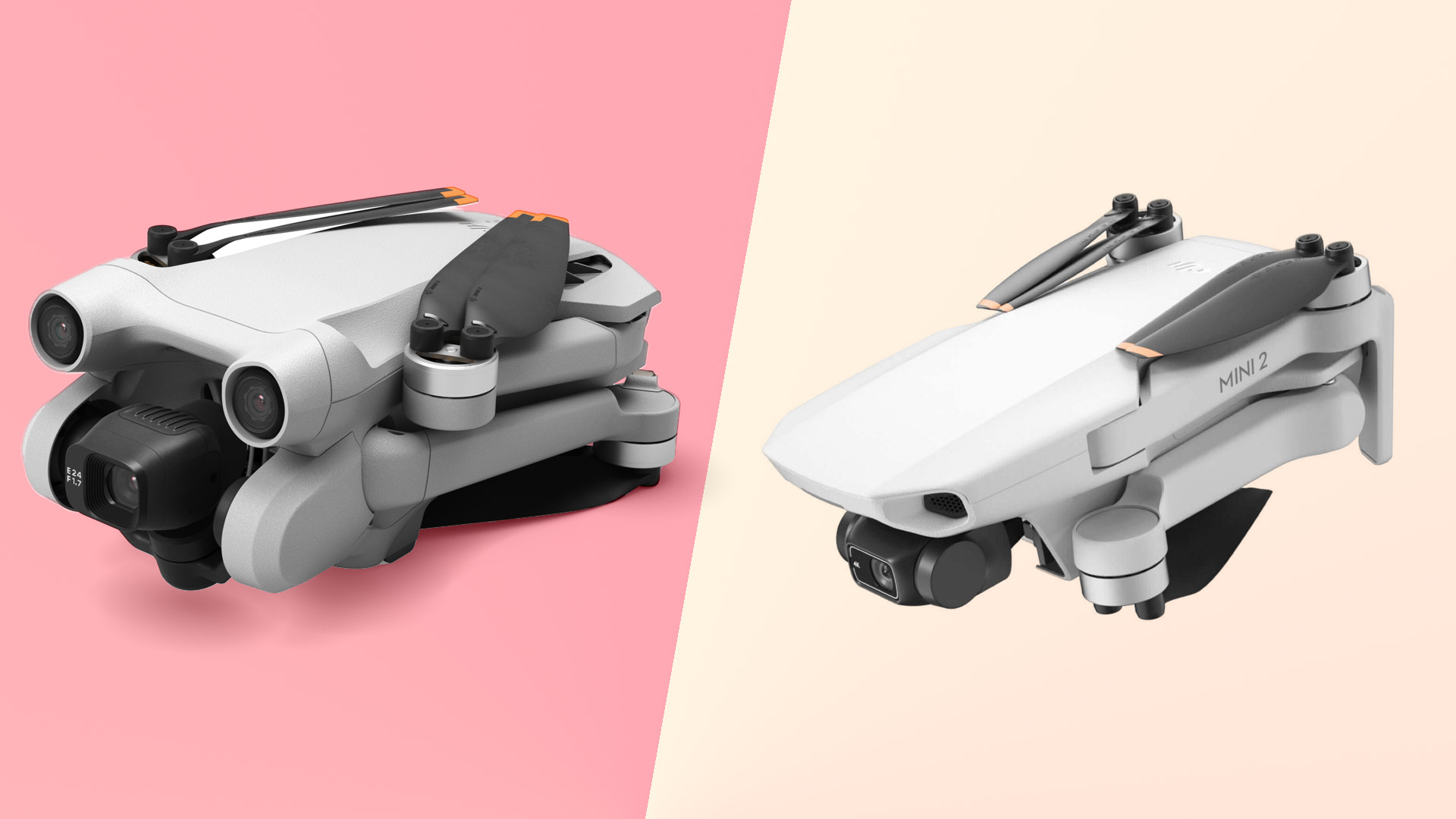
Despite this improved awareness, the pre-programmed Quick Shot flight mode lineups are largely the same. Both drones have Dronie, Helix, Rocket, Circle and Boomerang modes, while the DJI Mini 3 Pro adds Asteroid, which uses an ultra-zoomed-out effect that appears to turn the ground into a tiny planet.
These skills come into play more in the FocusTrack features. Point of Interest 3.0 circles around a subject, while the two ActiveTrack 4.0 modes follow the subject either at a side angle or in a standard ‘follow’ pattern. These are forms of the ‘follow me’ mode that is one of the key features missing from the DJI Mini 2.
The DJI Mini 3 Pro also has a MasterShots mode, which sees the drone run through a set of movements while keeping the subject centered.
It’s going to be much easier to get those professional, dramatic-looking YouTuber B-roll shots with a DJI Mini 3 Pro than a DJI Mini 2. And that’s probably the most important thing this new drone offers, bringing its core flexibility much closer to that of one of DJI’s high-end drones.

We don’t, however, get a change in speed. Both drones are rated for 16m/s top speeds, and 5m/s ascents and descents. Still, this is only slightly slower than the DJI Mavic Air 2.
DJI has pushed battery life as far as it can too, seemingly by using weight optimization to increase battery size rather than radically improved aerodynamics or motor efficiency. While the DJI Mini 2 has a 2250mAh battery that’s rated for up to 31 minutes in the air, the DJI Mini 3 Pro has a 2453mAh battery that’s rated for 34 minutes. That’s a 9% battery capacity increase, and a roughly 9% battery life increase.
Some users will be able to do much better, though. In certain countries you can buy the DJI Mini 3 Pro with an Intelligent Flight Battery Plus power unit, which pushes time in the air to a seriously impressive 47 minutes.
DJI has specified that this bundle will not be available in the EU, alongside some other territories. We imagine this is because the extra 40.5g of the plus-size battery will push the total weight of the DJI Mini 3 Pro way beyond the 250g weight limit for unregistered drones, a limit that typically includes the battery. While you may be able to get hold of the battery separately, make sure you consider any legal implications before doing so.
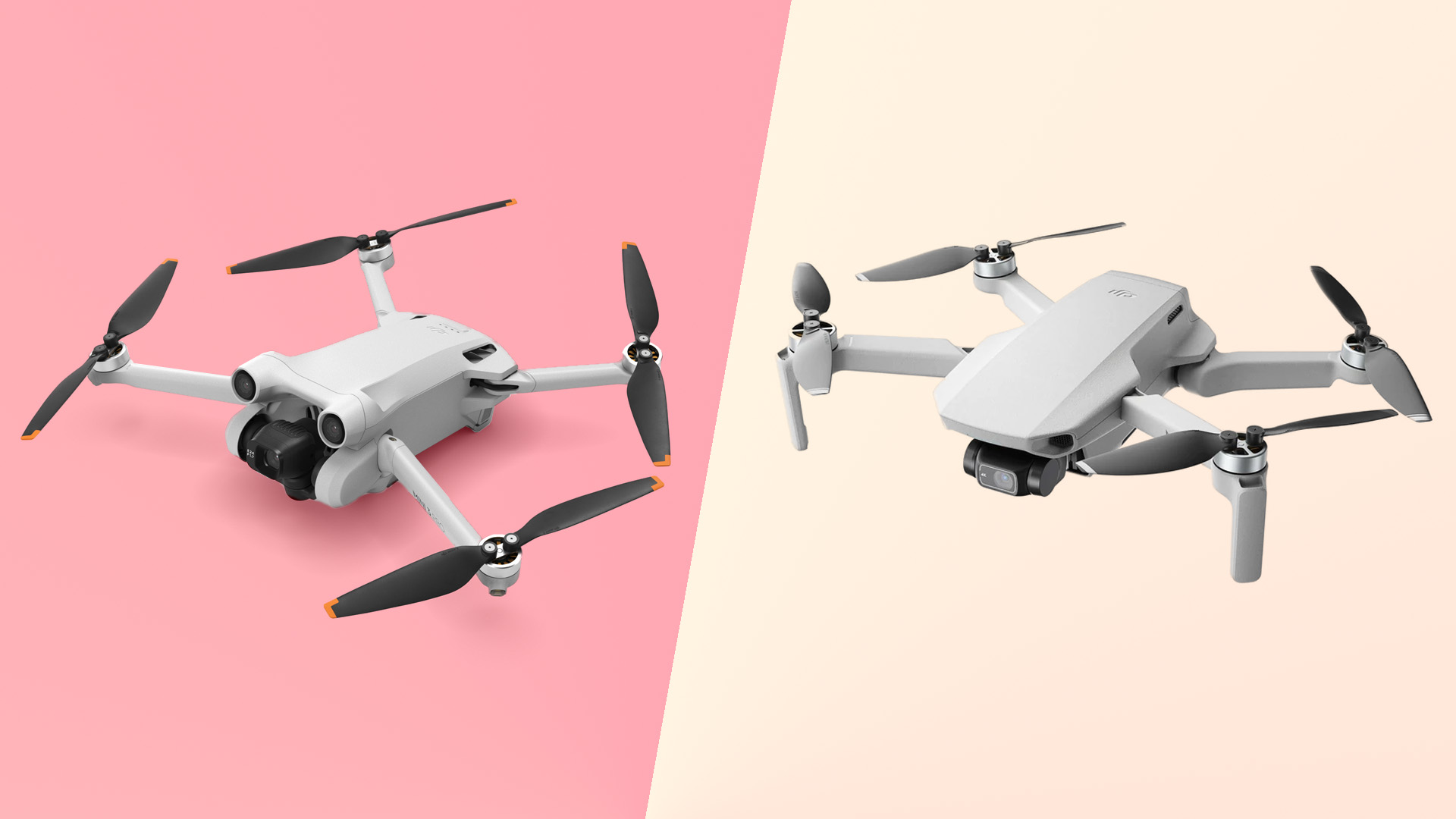
Charge speed has improved too. While the DJI Mini 2 comes with an 18W fast charger, the DJI Mini 3 Pro a 30W charger that uses the USB-PD standard. It fills up the battery in a claimed 68 minutes, and you may even be able to do slightly better with a higher-powered adapter; according to DJI’s specs, the DJI Mini 3 Pro battery supports charging at up to 37W.
As expected, DJI has leveled-up the wireless transmission standard of the DJI Mini 3 Pro to DJI O3 as well. The maximum range varies by country, but in the US it’s 12km, up from the 10km of the DJI Mini 2. Max wireless transmission bandwidth increases more dramatically, from 8Mbps to 18Mbps, and this gets you a far better preview picture when you’re using one of DJI’s remote controllers.
The DJI Mini 3 Pro supports a 1080p, 30fps live view instead of the 720p/30fps view of the DJI Mini 2. Latency is reduced too, from 200ms to 120ms.
DJI Mini 3 Pro vs DJI Mini 2: image and video quality
- Larger sensor, faster lens with true vertical shooting
- HDR video mode
- 4K/60p and 120fps slow-mo are new
There are several important image quality improvements to the DJI Mini 3 Pro, but the neatest feature here is the new vertical shooting mode. This involves a new gimbal design that turns the camera by 90 degrees, so that the drone doesn’t have to crop into the image to record vertical video.
This is a smart new feature, one that seems in lockstep with all those content creators who will often want to shoot portrait-aspect video, rather than in the classic landscape orientation.
The DJI Mini 3 Pro has a completely new sensor, too. Resolution has been bumped from 12MP to 48MP, although this is certain to be a quad bayer array sensor designed for 12MP capture.
There’s more good stuff, though. The sensor size has been increased from the action camera classic 1/2.3-inch, which you’ll find on the Mini 2, to 1/1.3-inch. It’s a much larger sensor, which helps to improve dynamic range and low-light performance. The new lens on the Mini 3 Pro will help too: its aperture is f/1.7, far faster than the f/2.8 of the DJI Mini 2. Bigger sensor, ‘faster’ lens – it’s all good news.
The new shooting modes’ benefits are easier to quantify. DJI’s Mini 3 Pro can shoot 4K video at 60 frames per second, where the DJI Mini 2 is limited to 30fps capture at that top resolution.
It also gains a true slow-mo mode, able to capture Full HD video at 120fps. The best the DJI Mini 2 can do is 60fps at 2.7K resolution, for a modest 2x slow-motion effect in the edit if you’re happy with a 30fps final frame rate.
The DJI Mini 3 Pro also has an HDR mode, something that’s missing from the DJI Mini 2. DJI describes this as a native dual-ISO feature, which points towards the use of DOL-HDR. This is a sensor-level feature, where a camera can effectively capture two exposures simultaneously by reading each line of sensor pixels twice, for darker and lighter shots; combine the two and you can increase the dynamic range of the final footage.
Enabling this feature halves the maximum frame rate to 30fps, but it solves the classic HDR image issue of ghosting.
Higher-quality top capture modes naturally see the bit-rate ceiling rise, from 100Mbps to 150Mbps. We also get a D-Cinelike mode, a ‘flat’ preset that’s designed to deliver the greatest dynamic range for those who will grade color themselves in the edit.
Verdict
We couldn’t have realistically asked for more from the DJI Mini 3 Pro. DJI has given us stacks of new features, like 120fps slow-mo, HDR and a proper object-detection system; that last one makes the drone far more useful as a camera for content creators and video projects who don’t have the budget for one of DJI’s high-end drones.
The new DJI RC remote also increases the Mini 3 Pro’s credibility as an at least somewhat ‘Pro’ drone, letting you get off the ground quickly without having to pair your phone to the remote.
Its price is the only major roadblock. The DJI Mini 3 Pro is much less approachable than the DJI Mini 2, which has been one of our favorite ‘first drone’ recommendations for a while now. $759 / £709 / AU$1,119 to try out drone flying? That may be a bit much for many people.
However, we do think this will be a worthwhile upgrade for those who have used one of DJI’s beginner drones and want to take the next step, particularly as you can save on the remote control if you already own a compatible one.

Andrew is a freelance journalist and has been writing and editing for some of the UK's top tech and lifestyle publications including TrustedReviews, Stuff, T3, TechRadar, Lifehacker and others.